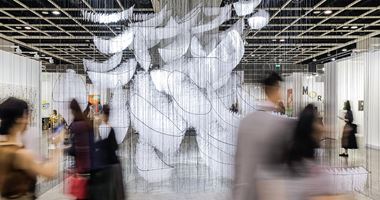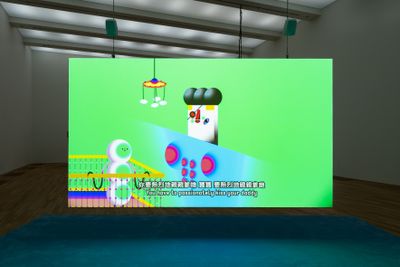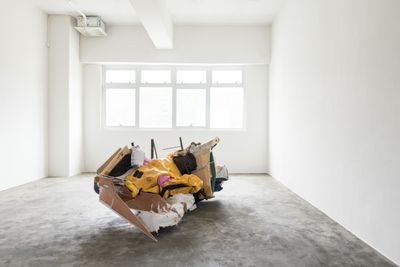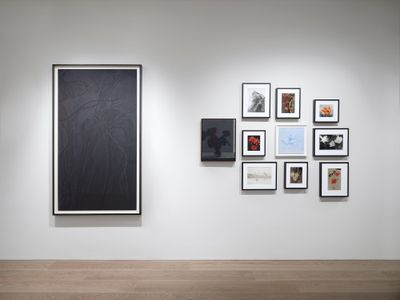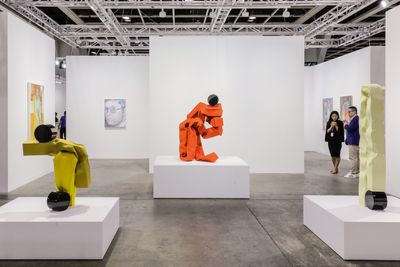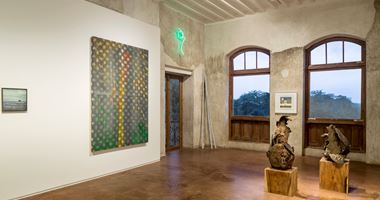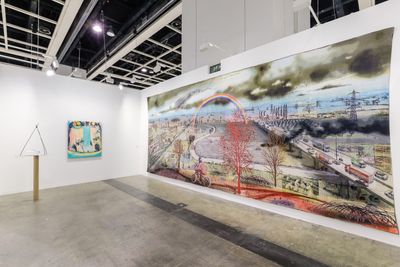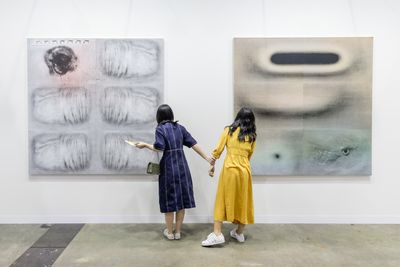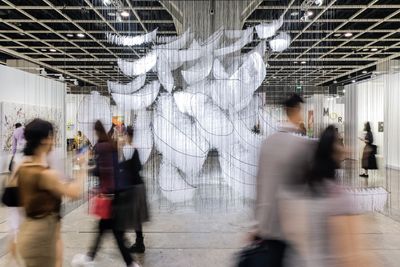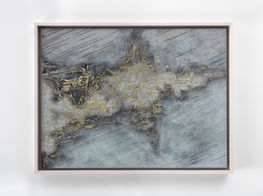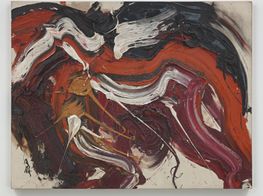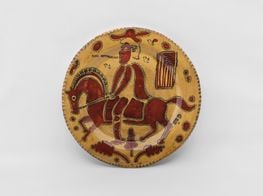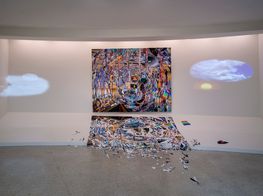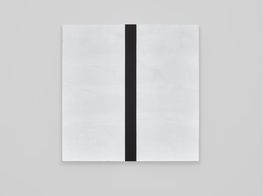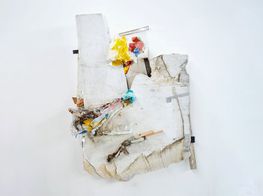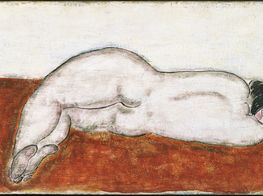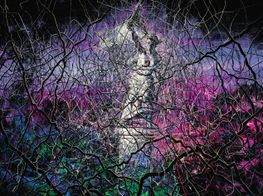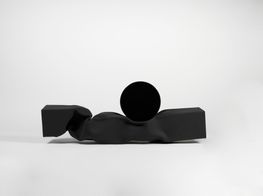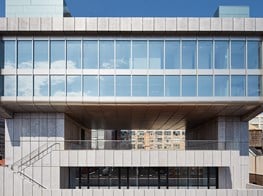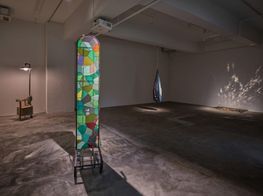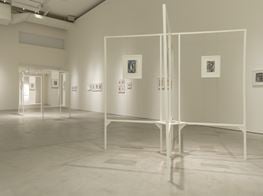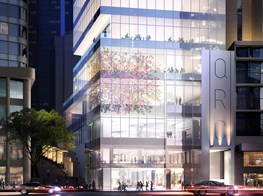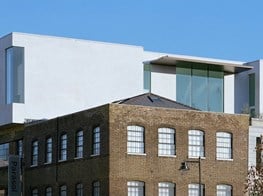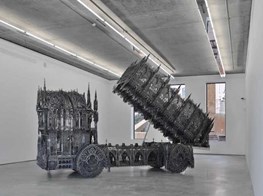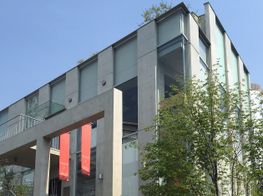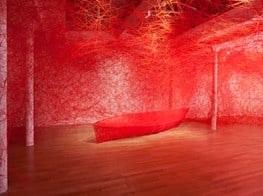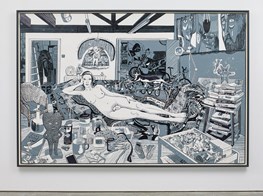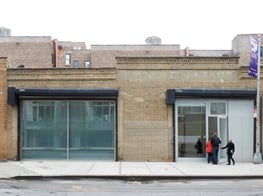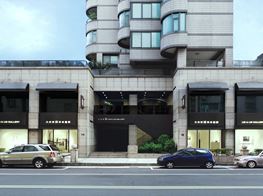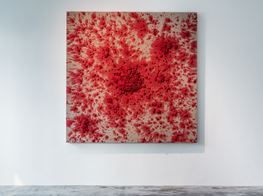Art Basel in Hong Kong 2019: A Post-mortem
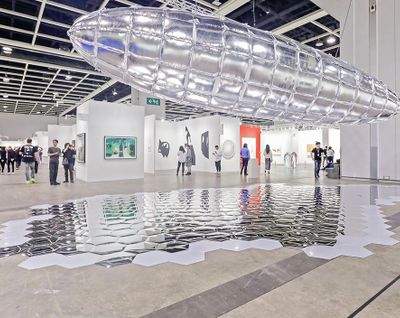
Lee Bul, Willing To Be Vulnerable – Metalized Balloon (2019). Exhibition view: Encounters, Art Basel in Hong Kong (29–31 March 2019). Courtesy Ocula. Photo: Charles Roussel.
Ocula contributor Diana d'Arenberg gives her annual post-mortem of Hong Kong's Art Basel week, running through some of the highs and lows of the fair's seventh edition, which opened to the public from 29 to 31 March 2019.
Although Art Basel in Hong Kong is the youngest of the Art Basel fairs, and a relative newcomer to the international art fair circuit, it has now become a major attraction for collectors and galleries from around the world. The seventh edition of Art Basel in Hong Kong saw thousands of art courtesans and benefactors kick off the week with a string of parties, fundraisers, and dinners, which left many complaining about their stressful schedules, and collectors visibly exhausted by the time Art Basel opened on Wednesday for the first of two VIP preview days (27–28 March 2019). How we suffer for art.
While a number of male artists were in town, including KAWS and Neo Rauch, many galleries seemed to get the memo about female representation as gender inequality has come increasingly under the spotlight in the wake of the #metoo movement. Sprüth Magers brought an all-female Eau de Cologne exhibition to a pop-up space in Hong Kong's H Queen's, showing works by eight female artists, who have mostly been with the gallery from inception. This third iteration of Eau de Cologne, which originally took place as a series of exhibitions and publications in Germany between 1985 and 1989, featured some of the most outspoken female artists of the time, including Barbara Kruger, Jenny Holzer, and Cindy Sherman. Meanwhile, JC Contemporary, in the new Tai Kwun heritage cultural complex, staged The Violence of Gender: Performing Society (16 February–28 April 2019), curated by Susanne Pfeffer, a radical and timely group exhibition with works by 11 international artists—including Pamela Rosenkranz, Anne Imhof, Wong Ping, and Marianna Simnett—examining the construction of gender in society.
Pace Gallery showcased a series of large-scale and mainly monochromatic luminous and scintillating paintings by 1970s 'Light and Space' artist Mary Corse (26 March–11 May 2019). Painted with microsphere-embedded paint, the works are playfully interactive, radiating light as you move around them. Largely overlooked in favour of her male counterparts in the 1970s, the California-based artist has finally gotten the recognition so long overdue. Last year, her art was the subject of a career-spanning survey, A Survey in Light at the Whitney Museum, which will open at LACMA later in 2019. A long-term presentation of historical works by the artist is also on view at Dia:Beacon in New York.
Gagosian presented a group exhibition of floral still life paintings by three famous deceased male artists—Cézanne, Morandi, and Sanyu—curated by Chinese art superstar Zeng Fanzhi. Sanyu is known well in the upper echelons of the art market, driven mainly by the 1992 Sotheby's auction in Taipei that saw a Sanyu painting sell for three times estimate and a 2016 Christie's sale in Hong Kong, when a 1950s oil on masonite still life of chrysanthemums in a glass vase reached 13.4 million US dollars.
Two new spaces also opened this year in time for art week. Axel Vervoordt Gallery—owned by Boris Vervoordt, son of the Belgian dealer and Gutai crusader Axel Vervoordt—relocated from a jewel box space in Central to a large 8,000-square-foot space in industrial Wong Chuk Hang. All the better to showcase a collection of impressive works by Gutai and ZERO group artists—including a dramatic red painting by Kazuo Shiraga previously featured at the dealer's curated Palazzo Fortuny exhibition Intuition at the Venice Biennale in 2017 (Enji, 1983). On another floor, the gallery exhibits Infinitive Mutability (25 March–1 June 2019), a group show featuring works by Korean artist Kimsooja, Bosco Sodi, and Peter Buggenhout.
Lévy Gorvy also recently celebrated opening a space in the former Graff jewellers ground-floor space in Central, kicking off with a group exhibition of nature-inspired works including paintings by Joan Mitchell, Liu Ye, Agnes Martin, and a Zao Wou-Ki (Return to Nature, 26 March–18 May 2019). At the preview of Christie's 20th Century and Contemporary Art Sales, a monumental triptych by Chinese modern master, Zao Wou-Ki was featured (Triptyque 1987–1988). Estimated between USD 15–20 million, it is one of the largest and significant of the artist's work to come to auction.
Around the auction previews, Warhols—including a large pink screenprint with a dollar bill printed on it—were displayed at Christie's Post-War and Contemporary Art preview of the Robert B. and Beatrice C. Mayer Family Collection, to auction this spring in New York. Also highlighted was a Robert Rauschenberg, Buffalo II (1964), featuring a portrait of former U.S. president John F. Kennedy collaged with motifs of American imperial power. The work is estimated at USD 50 million, but is expected to fetch much higher. Shown alongside was a large painting by Wayne Thiebaud, Eating Figures (Quick Snack) (1963), of a couple holding a hot dog and soda—American creations and symbols of social integration and egalitarianism; cheap and enjoyed by all—painted in 1963 before obesity and diabetes became a nationwide epidemic.
Sotheby's previewed a 1960 Mark Rothko from the SFMOMA collection, estimated between USD 35–50 million and selling in New York in May to benefit the museum's acquisitions fund. An early white infinity net painting by Yayoi Kusama, Interminable Net no.4 (1959), sold for USD 8 million at the auction house's Hong Kong spring sale, a new auction record for the artist, but proving once again that women artists fare less well on the secondary market.
During the two VIP preview days for Art Basel in Hong Kong, the usual chorus of complaints of overpriced drinks and mediocre food quality could be heard and found throughout the halls of the Hong Kong Convention and Exhibition Centre. The pace was less frenetic in the first few opening hours than in previous years, but numerous galleries reported strong sales nonetheless. (But when do they not?) David Zwirner presented a booth with four painted steel sculptures by Carol Bove—who will have her first solo exhibition at the Hong Kong gallery in autumn 2019—priced between USD 400–500,000. The booth, which reportedly sold out, also presented an historical oil on canvas portrait by Alice Neel (Abdul Rahman, 1964), as well as works by Marlene Dumas, Lisa Yuskavage, along with paintings by Liu Ye, an artist the gallery recently secured representation of. Galerie Thaddaeus Ropac had closed a USD 1.8 million sale of Georg Baselitz's painting Immer noch unterwegs (2014).
At the top of the market, Luxembourg & Dayan had a modern masters-filled stand with works by Lucio Fontana, Balthus, and Pablo Picasso (Femme assise dans un fauteuil [1941], priced at USD 19 million). A large yellow Jean-Michel Basquiat painting, Onion Gum (1983) at Van de Weghe priced at USD 18 million (bought in 2016 from Sotheby's for USD 6.6 million) had already done the rounds at several fairs in the past couple of years. London gallery Richard Nagy debuted its Hong Kong appearance with a beautiful booth dedicated to 40 works on paper by Austrian expressionist, Egon Schiele, including a number of erotic drawings and one painting priced at USD 12 million.
With 242 galleries from 35 countries, this was a more refreshing fair in 2019 with greater diversity in terms of artists represented and works shown. The Kusamas and the cutesy Naras were still around, along with the usual big-name, blue-chip works that make the rounds at every international fair, but they were easy enough to bypass in favour of exciting discoveries. A booth featuring the colourful and geometric ceramic works of Pakistani-born London-based artist Lubna Chowdhary at Jhaveri Contemporary sold out, with works ranging from USD 8–12,000. Chinese-American artist Candice Lin's install took over the booth of François Ghebaly, with a collection of ceramic sculptures and tapestry that touched on colonialism and exploitation of labour. Most works had sold by the second day.
London's Project Native Informant's wallpaper-covered booth of intergender reproductive system fused with octopus tentacles, was dedicated to New York-based Juliana Huxtable. Titled ZOOSEXUALITY (2019), the installation of bright, hybrid portraits fused animal and human characteristics (a reference to furry fetish culture), and touched on online culture, sexuality, gender, and stoner culture. A multidisciplinary artist, writer, and DJ, Huxtable came to prominence with her inclusions in the 2015 editions of the New Museum Triennial and Performa. Bringing a dose of Brexit realness to the art fair circus, Grayson Perry's large, dystopian, class warfare tapestry dominated the booth of Victoria Miro (Battle of Britain, 2017). At Alfonso Artiaco Gallery, a minimalist crucifix-shaped floor sculpture by Carl Andre was laid out across the booth floor (Crux 14, 2010).
Showing in Discoveries, a section for emerging artists, L.A. gallery Commonwealth and Council dedicated a booth to the works of Brazilian-born multimedia artist Clarissa Tossin—shortlisted for the BMW Art Journey—in an exhibition titled Future Fossil. Drawing on Amazonian tribal culture and sci-fi, her suspended woven archival inkjet disks and fossilised-looking, globe-shaped sculptures made of garbage draw attention to ecological disasters. New York's Luhring Augustine brought several ethnographic-inspired braided ceramic sculptures by Simone Leigh, winner of the 2018 Hugo Boss Prize.
Hong Kong galleries distinguished themselves from their established international counterparts with considered spotlights on new and local names. Empty Gallery focused on the rediscovered Chinese-American artist Tishan Hsu, who was active in the New York scene in the 1980s, before retreating from the art world in the 1990s. Works from the 1980s through to the early 1990s were exhibited at the gallery's fair stand in the Insights sector, while an exhibition of his most recent recent work is on view at the Tin Wan gallery (delete, 26 March–25 May 2019). Blindspot Gallery brought a political bent to the fair with a public school uniform kinetic work, A Countess from Hong Kong (2016), by Hong Kong artist Leung Chi Wo, which referenced the 1967 pro-Communist Hong Kong riots. At its Wong Chuk Hang space, the gallery presented a solo exhibition by Hong Kong artist Lam Tung Pang (Saang Dung Gei, 26 March–11 May 2019).
Curated by Alexie Glass-Kantor for the fifth year, the Encounters section presented large-scale installations around the fair that provided an opportunity for social, cultural, and political reflection. Native Home (2019) by Australian artist Tony Albert, consisted of a scaffold of a small house with the words Native and Home on either side of the structure: a wunderkammer filled with kitsch and cultural objects and tourist souvenirs depicting stereotypes of Aboriginal culture, from tea towels, and ashtrays, to boomerangs. Berlin-based artist Chiharu Shiota presented Where Are We Going? (2017–2018)—white ghostly boats suspended in a sea of black yarn as a metaphor for migration, displacement, and asylum. Lee Bul's Willing To Be Vulnerable – Metalized Balloon (2019), referencing the ill-fated Hindenburg—previously sited at Berlin's Martin-Gropius-Bau and her recent retrospective at London's Southbank Centre—was shown hovering above visitors. It had found a home in a private Chinese collection.
Whereas in previous Art Basel editions, gallerists seemed to second-guess the Asian market, bringing out an overabundance of YBAs, flashy neon works, and reflective selfie-made sculptures, this year the fair demonstrated a better understanding of the market and the city, bringing out stronger works from both Asia and the 'West'. 'Everyone now comes to Hong Kong', one Hong Kong art dealer said. 'It used to be that the quality wasn't seen as good, or that the market wasn't as sophisticated. But that's all changed now. Art Basel in Hong Kong is a staple on the art fair calendar.' —[O]

